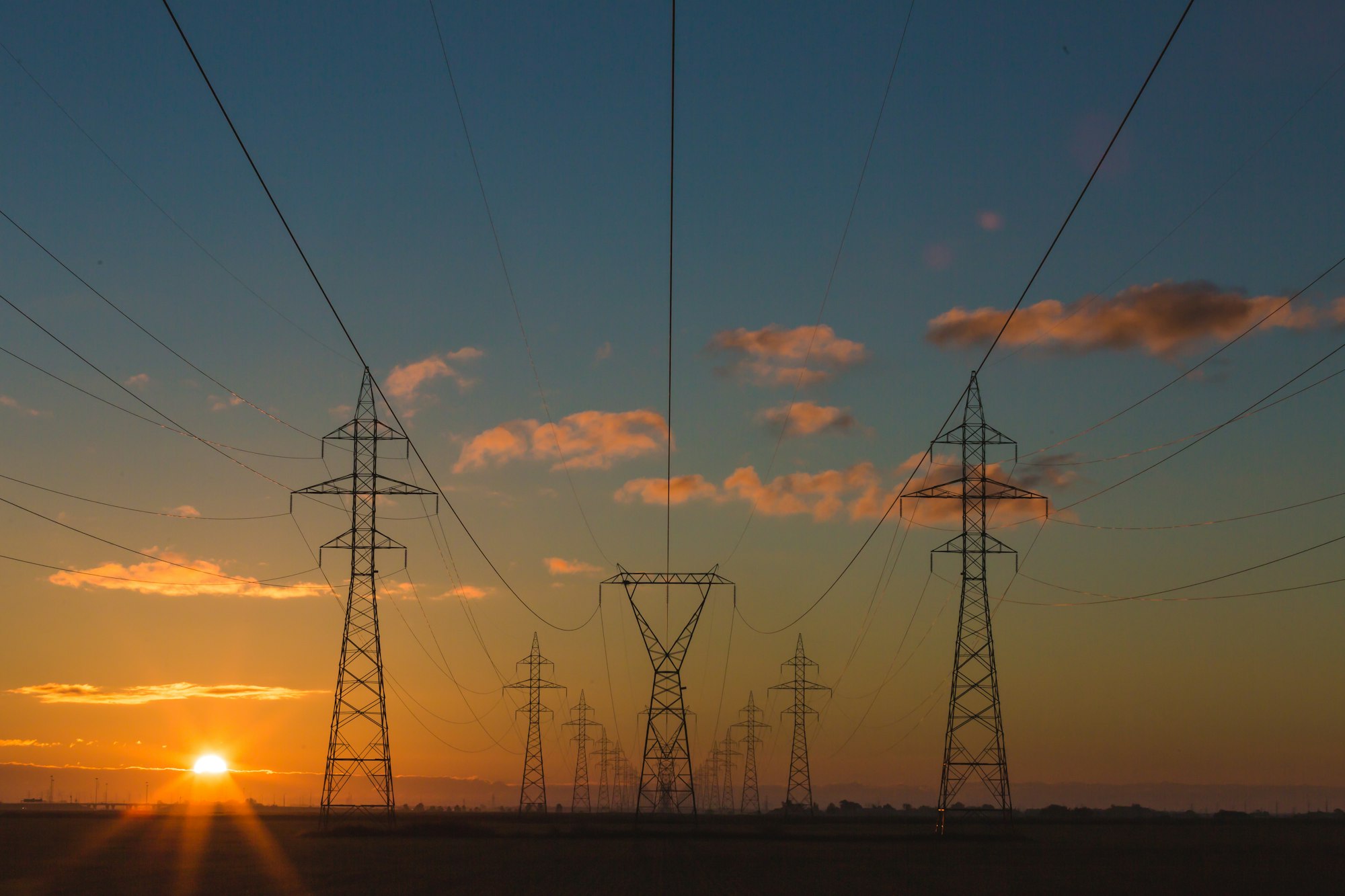Thermal Properties and Temperature

Thermal expansion of solids, liquids, and gases
When heated, materials typically exhibit a phenomenon known as thermal expansion, where they increase in size, and conversely, they shrink when cooled.
In the case of solids, their constituent particles are tightly packed in a rigid structure bound by strong intermolecular forces.
As the temperature rises, these particles start to oscillate more intensely, leading to an expansion of the solid material.
Liquids experience a greater degree of expansion than solids since their particles enjoy more freedom to move around due to less rigid positioning and weaker bonding forces.
Gases undergo the greatest expansion of all states of matter because their particles are dispersed randomly and are loosely connected by minimal, attractive forces.
Uses of thermal expansion
Thermal expansion is a principle that finds utility in numerous applications, with one of the primary uses being constructing bimetallic strips.
Bimetallic strip
A bimetallic strip consists of two different metals fused, which react to heat by bending or curving.
This occurs because each metal has its unique expansion rate when subjected to temperature changes.
When the strip is heated, one metal expands more than the other, causing the strip to bend towards the metal with a lower expansion rate.
This simple yet ingenious mechanism is harnessed in various devices such as thermostats and thermometers, where precise temperature, measurement, and control are crucial.
Fire Alarm

In a fire alarm system, the heat generated by a fire will cause the bimetallic strip within the device to flex.
This bending action is due to the differential expansion rates of the two metals that make up the strip. As the strip bends, it completes or interrupts an electrical circuit, depending on its design.
This action activates the alarm system, which then sounds an alert to indicate the presence of a fire, thereby initiating evacuation procedures or other emergency responses.
Thermostat

Bimetallic strips are integral components in many types of thermostats. They serve as temperature-sensitive switches that control electrical circuits responsible for heating or cooling systems.
When the ambient temperature deviates from a pre-set level, the bimetallic strip within the thermostat responds by bending.
This mechanical movement either makes or breaks an electrical connection, which in turn activates or deactivates heating or cooling devices to maintain the desired temperature range within an environment.
Liquid-in-glass thermometers

These thermometers are classic instruments for measuring temperature, operating on the principle of thermal expansion.
Inside the glass tube of these thermometers is a liquid—commonly mercury or colored alcohol—that expands when the temperature around the thermometer increases.
As the liquid expands, its volume grows, and it ascends along the narrow confines of the tube.
Disadvantages of thermal expansion
Thermal expansion, while useful in many applications, also presents challenges in various contexts, with railway tracks being a prime example.
Railway tracks

Railway tracks are exposed to the elements, meaning they experience a range of temperatures throughout the year.
As the metal tracks heat up, they expand, and as they cool down, they contract.
This ongoing cycle can lead to structural instability. If not adequately accounted for, the forces generated by expansion can cause the tracks to buckle or bend.
Similarly, contraction might create gaps or misalignments in the rail joints.
Engineers include small gaps known as expansion joints between rail sections to mitigate these issues.
These gaps are carefully calculated to allow each rail section to freely expand and contract without causing damage or deformation that could jeopardize train safety.
However, even with these precautions, significant temperature extremes can still pose risks, requiring ongoing maintenance and monitoring of the tracks.
Anomalous Expansion of Water

When water cools down, it contracts and becomes denser until it reaches approximately 4°C. At this temperature, water attains its maximum density.
Intriguingly, as it cools further from 4°C to its freezing point at 0°C, it expands.
This is due to the unique molecular structure of water; as it approaches freezing, the molecules start arranging themselves into a hexagonal crystal structure characteristic of ice.
This structure is more spacious than the arrangement of molecules in liquid water, increasing in volume.
Consequences of Water's Anomalous Expansion: This quirk of water's expansion can have serious practical implications:
- Burst Pipes: If water inside pipes reaches freezing temperatures, the expansion that occurs can exert substantial pressure on the pipes. If the pressure is too great for the pipe material to withstand, it can lead to cracks or bursts, causing water leaks and potentially significant damage.
- Crack Formation: The same principle applies to any container or natural setting. In rock crevices or within structures where water is trapped, the expansion upon freezing can cause cracks or structural damage.
- Ice Formation on Water Bodies: Interestingly, this property of water also has ecological benefits. As water expands and becomes less dense upon cooling below 4°C, ice forms on the surface of bodies of water rather than sinking. This insulates the liquid water below, protecting aquatic life during cold periods.
Internal Energy
The internal energy of an object is the energy it has because its particles are moving and interacting.
When an object is heated, its temperature and internal energy increase. This means there is also an increase in the average kinetic energies of all the particles in the object.
Specific Heat Capacity
The specific heat capacity is a measure of how much energy is needed to raise the temperature of a given mass of a substance by one degree Celsius (or one Kelvin, as the size of the degree increment is the same in both scales).
It's essentially a value that reflects how resistant a material is to changing its temperature.
In more formal terms, if ( E ) is the change in the internal energy of a mass ( m ) of a substance that results in a temperature change ( ΔT ), then the specific heat capacity ( c ) can be expressed by the formula:
The unit of specific heat capacity is J/(kg°C), while the unit of internal energy is Joules (J).
Melting, boiling, and evaporation

As you read earlier, when a substance goes from a solid to a liquid, it is known as melting; when a substance goes from a liquid to a solid, it is known as freezing.
Pure substances have a definite temperature called a melting point (or freezing point). This is the temperature at which the substance solidifies or melts.
At standard atmospheric pressure, the melting point of water is 0°C.
Similarly to melting, pure substances also have a boiling point. The boiling point of water at standard atmospheric pressure is 100°C.
At these points (melting and boiling points), energy is still being supplied to these substances, but there is no change in temperature.
This energy is instead used as latent heat to weaken intermolecular forces (latent heat is no longer in the syllabus).
Condensation

In this process, gas particles lose kinetic energy, which can occur due to cooling or compression.
As the particles slow down, attractive forces between them (such as van der Waals forces, hydrogen bonding, etc.) become more effective, and they begin to stick together, forming a liquid.
Condensation is the opposite of vaporization. An everyday example is dew formation in the morning or the fogging up of a bathroom mirror during a hot shower.
Solidification (Freezing)

During solidification, a liquid loses thermal energy, usually through cooling, causing its particles to slow down so they can no longer overcome the attractive forces between them.
As a result, the particles arrange themselves into a fixed, ordered structure that we recognize as a solid. Solidification is the opposite of melting. Common examples include freezing water to form ice or the hardening of molten wax as it cools.
Evaporation

This is a process where particles within a liquid, particularly those at the surface with higher kinetic energy, gain enough energy (often from heat) to overcome the attractive forces holding them in the liquid and vaporize into a gas.
Evaporation is a type of vaporization that occurs at temperatures below the boiling point of the liquid.
The remaining liquid cools down during evaporation because the particles with higher kinetic energy have escaped, lowering the average kinetic energy of the particles left behind.
This is why sweating cools the body; the sweat absorbs heat from your skin to evaporate.
There are 3 major factors which affect evaporation:
- Temperature
- Surface area
- Air movement over a surface
Temperature
A higher temperature means that the rate of evaporation is faster as more particles are moving fast enough to escape from the surface.
Surface area
The larger the surface area of a liquid, the higher the evaporation rate, as there will be more particles near the surface of the liquid.
Air movement
Winds blowing over the surface of the liquid can help the particles on the surface of the liquid escape, increasing the evaporation rate.
Time for an experiment
Below is a simulation where you can put your knowledge to the test and record any observations based on what you know so far. Notice how different materials have different specific heat capacities.
Here is a downloadable guide on the basics of how the simulation works, so that you can make the most out of it.
And boom! This is the end of this revision guide. Good job on taking down yet another chapter! We're so proud of you!
To celebrate, here is a little treat that goes well with the theme of this chapter.
Continue Revising


